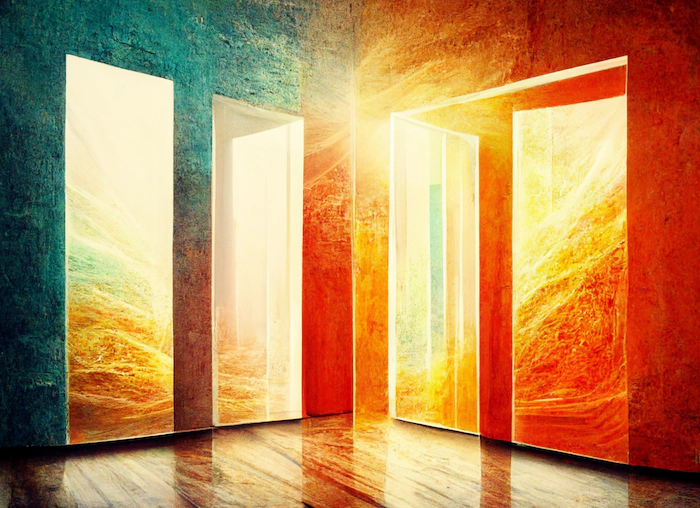governance
How to Handle Conflicts of Interest at your Not-for-profit Organisation
Published: November 21, 2022
Read Time: 6 minutes

-
A conflict of interest occurs when someone has the opportunity to use their authority to benefit themselves, instead of the party they’re supposed to be serving.
-
In not-for-profits (NFPs), this can take the form of awarding lucrative supply contracts to family or friends, giving certain people exclusive benefits, or interfering with awards.
-
NFPs have to consistently monitor for conflicts of interest, so that changes with the agenda and board members’ circumstances don’t create an issue no one catches.
The phrase “conflict of interest” strikes fear into the hearts of many not-for-profit (NFP) board chairs. And of course, no one wants to feel as though their organisation might be acting against the best interests of the people it wants to help.
However, the truth is that conflicts of interest naturally arise when people contribute their time, contacts and money to an NFP, while also having professional and personal lives of their own.
What’s important is that you create a process that makes it easy for board members to report their conflicts of interest ahead of time, and how you address them when they inevitably occur.
At one of our recent webinars Garry Barnes, leader of Governance Advisory at Vital Advisory, spoke about how to spot a conflict of interest in an NFP, the potential impact, and what to do. We’ve gathered some key points from the webinar into a brief article to assist boards in their governance duties.
What is a conflict of interest?
Simply put, a conflict of interest occurs when a person is put in a position that enables them to benefit their own personal interests above the party they have been appointed to serve.
These personal interests can include those of family members or friends. In the case of an NFP, board members are supposed to serve clients (people using the service), volunteers and donors, and, to some extent, the community the non-profit operates in.
Some conflicts of interest are real: someone in authority really is deriving illicit gain from their position. In other cases, the conflict of interest is perceived. For example, a person has connections that another party believes they could exploit for their own benefit.
Conflicts of interest can have repercussions for an NFP
A real or even perceived conflict of interest can have long-lasting impacts on an NFP’s reputation, and consequently on its clients.
Loss of trust
If your NFP is believed to be giving preferential treatment to, say, certain vendors, you can lose the trust of clients, volunteers and donors. Losing the last two can destabilize the organisation and undermine your ability to provide the support you promised clients. From your clients’ point of view, feeling like they can’t trust an organisation they’ve relied on may mean they lose a vital resource.
Loss of value
Non-conflicted contracts with vendors, staff and resources take into account the value they can bring to the NFP. So if a board member uses their influence to give the business to a relative, for example, rather than someone who is better qualified, your quality of service may suffer.
Loss of opportunity
Potential partners who hoped to work with your NFP will probably be put off from applying in the future if they believe your board members are being influenced by conflicts of interest. Which means you could be losing out on a good quality service or relationship.
Examples of conflicts of interest that can occur in NFPs
What constitutes a potential conflict of interest is quite broad. This list isn’t exhaustive, but it should give you an idea of situations to look out for.
Confidentiality: If your position on a board gives you access to certain information that you can use to further your own interests outside the NFP. For example, you could pass on details about a job opening or procurement contract to a friend or relative.
Benefits: Using the NFP’s resources to provide close contacts with certain services at a lower rate or free, but not giving other people the same access.
Employment: Hiring friends or relatives over other candidates that are equally or better qualified. Acting as a supervisor to a friend or relative would also fall under this category.
Remuneration: NFP board members may not receive payment for their services, but they might influence staff salaries based on personal relationships. Another type of remuneration that board members are very interested in are awards: Do any of your board members vote on awards your organisation applies for?
Financial: Arranging financial compensation for friends, family members or your own personal business. For example, giving a lucrative procurement contract to someone you know.
Gifts and bribes: The most obvious conflict of interest is having someone give you a gift or money in exchange for using your position to do something for them. This type of conflict of interest is often illegal, depending where you operate.
How to handle conflicts of interest at your not-for-profit organisation
There are two stages to handling conflicts of interest on an NFP board. The first happens when a new board member joins, and the second is ongoing.
Stage one: Onboarding
It’s not unusual for someone joining an NFP board to realise they have a conflict of interest, but it is essential to identify them as soon as possible.
To vet potential conflicts of interest among new board members, have them answer four questions:
- Do you have any personal interests that could benefit from your role on the board?
- What will your role be? (For example, will they be responsible for inspections, budget, payments, etc.)
- Is there any overlap between your personal interests and your role?
- Could a reasonable person believe that there could be a conflict of interest?
Determining that someone has a conflict of interest with part of the agenda doesn’t necessarily mean they should be denied a place on the board. It just means that they and the board need to take steps to avoid putting them in a position where they might be able to use their influence for personal gain.
Stage two: Monitoring
Assessing for conflicts of interest should be an ongoing process. Circumstances change: for example, since joining the board, someone might be planning to start a business that could potentially benefit from an upcoming agenda item.
Put in place a clear policy on conflicts of interest. How do board members report them? What actions should they take when they arise: Do they need to leave the room, or just recuse themselves from votes related to the issue?
Healthy NFP governance requires that you return to the discussion at least annually. Have a clear idea of where you will record conflicts of interest, and who will be in charge of that record, so it can be kept up-to-date and checked regularly.
This article is based on a webinar featuring Garry Barnes, leader of Governance Advisory at Vital Advisory. View the webinar for Garry’s full discussion on this topic. This article is general in nature and does not constitute professional advice. Better Boards recommends that the reader contact Garry Barnes directly for more information, or seek their own professional guidance in relation to their own circumstances.
Further Resources
How to Handle Conflicts of Interest On Your Not-for-profit Board
Passion and Professionalism: Legal Duties of a Volunteer Board
Dealing with Disputes in the Boardroom
Share this Article
Recommended Reading
Recommended Viewing
Author
- About
-
Better Boards connects the leaders of Australasian non-profit organisations to the knowledge and networks necessary to grow and develop their leadership skills and build a strong governance framework for their organisation.
Found this article useful or informative?
Join 5,000+ not-for-profit & for-purpose directors receiving the latest insights on governance and leadership.
Receive a free e-book on improving your board decisions when you subscribe.
Unsubscribe anytime. We care about your privacy - read our Privacy Policy .










